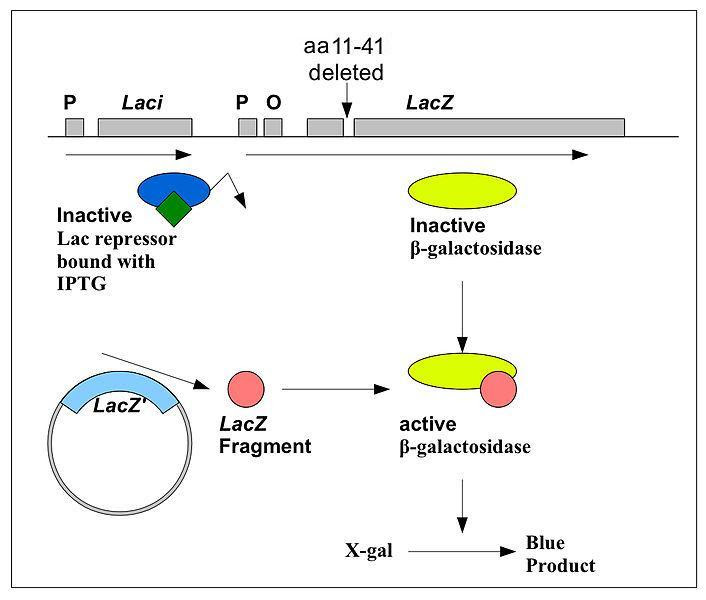
What is the cap site for the Lac Operon?
Answer
390.6k+ views
Hint: In E. coli and other enteric bacteria, the lactose operon (lac operon) is necessary for lactose transport and metabolism. Although most bacteria prefer glucose as a carbon source, the lac operon uses beta-galactosidase to digest lactose when glucose is unavailable. Lac operon gene regulation was the first genetic regulatory mechanism to be properly described, and it has since become a model for prokaryotic gene regulation.
Complete answer:
The lac operon in E. coli contains lactose metabolism genes. It is expressed when lactose and glucose are both present. Lac repressor and catabolite activator protein (CAP) are two regulators that turn on and off the operon in response to lactose and glucose levels. Catabolite activator protein (CAP) binds to the CAP binding site, which is a positive regulatory site.
When CAP binds to this location, it aids RNA polymerase in binding to the promoter, which stimulates transcription. CAP interacts with a stretch of DNA immediately before the lac operon promoter, assisting RNA polymerase in binding to the promoter and promoting high transcription levels.
CAP isn’t constantly operational (able to bind DNA). Instead, cyclic AMP (cAMP), a tiny molecule, regulates it. When glucose levels are low, E. coli produces cAMP as a “hunger signal.” cAMP binds to CAP, causing it to change shape and become capable of binding DNA and promoting transcription. CAP cannot bind DNA without cAMP and is therefore inactive.

Note:
The lac genes are controlled differently depending on whether the bacterium has access to the lactose substrate. When lactose is not available as a carbon source, the bacterium does not generate proteins. Lac genes are arranged in an operon, which means they are orientated in the same way on the chromosome and co-transcribed into a single polycistronic mRNA molecule.
Complete answer:
The lac operon in E. coli contains lactose metabolism genes. It is expressed when lactose and glucose are both present. Lac repressor and catabolite activator protein (CAP) are two regulators that turn on and off the operon in response to lactose and glucose levels. Catabolite activator protein (CAP) binds to the CAP binding site, which is a positive regulatory site.
When CAP binds to this location, it aids RNA polymerase in binding to the promoter, which stimulates transcription. CAP interacts with a stretch of DNA immediately before the lac operon promoter, assisting RNA polymerase in binding to the promoter and promoting high transcription levels.
CAP isn’t constantly operational (able to bind DNA). Instead, cyclic AMP (cAMP), a tiny molecule, regulates it. When glucose levels are low, E. coli produces cAMP as a “hunger signal.” cAMP binds to CAP, causing it to change shape and become capable of binding DNA and promoting transcription. CAP cannot bind DNA without cAMP and is therefore inactive.

Note:
The lac genes are controlled differently depending on whether the bacterium has access to the lactose substrate. When lactose is not available as a carbon source, the bacterium does not generate proteins. Lac genes are arranged in an operon, which means they are orientated in the same way on the chromosome and co-transcribed into a single polycistronic mRNA molecule.
Recently Updated Pages
Master Class 9 General Knowledge: Engaging Questions & Answers for Success

Master Class 9 English: Engaging Questions & Answers for Success

Master Class 9 Science: Engaging Questions & Answers for Success

Master Class 9 Social Science: Engaging Questions & Answers for Success

Master Class 9 Maths: Engaging Questions & Answers for Success

Class 9 Question and Answer - Your Ultimate Solutions Guide

Trending doubts
State and prove Bernoullis theorem class 11 physics CBSE

Who built the Grand Trunk Road AChandragupta Maurya class 11 social science CBSE

1 ton equals to A 100 kg B 1000 kg C 10 kg D 10000 class 11 physics CBSE

State the laws of reflection of light

One Metric ton is equal to kg A 10000 B 1000 C 100 class 11 physics CBSE

Difference Between Prokaryotic Cells and Eukaryotic Cells




